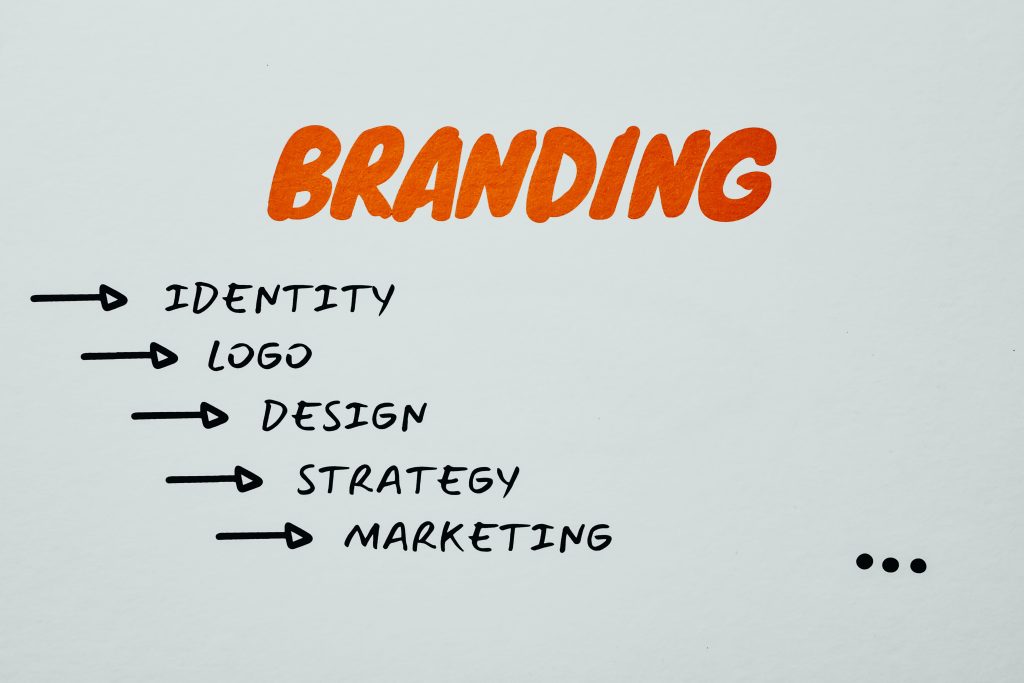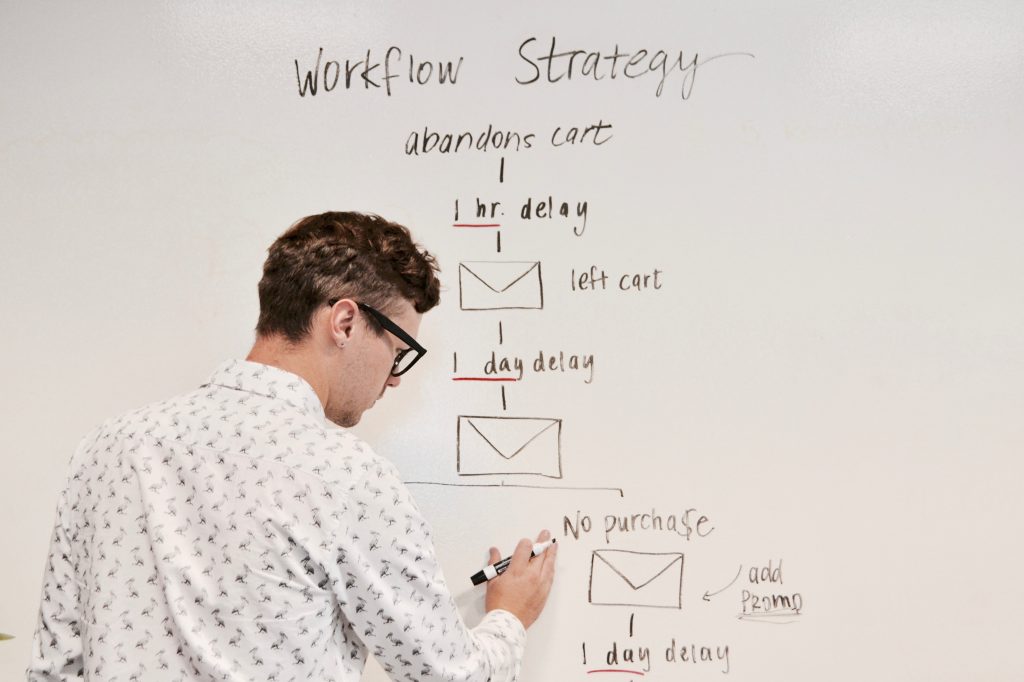Developing a strong marketing strategy is key to long-term, sustainable success for any business, and a marketing mix serves as an important part of this strategy. A marketing mix is a combination of elements that serve as the foundation for every single form of marketing or promotion your business engages in.
In this article, we’ll explain the elements that make up a marketing mix, the roles they play and how you can create an effective marketing mix as part of a broader marketing strategy.
Marketing Mix Explained
A marketing mix is a framework that companies can use to market their product or service more effectively. It serves to provide focus and direction to a marketing strategy, with four key elements serving as pillars. The key elements of a marketing mix are:
- Product
- Price
- Place
- Promotion.
These elements are known as the 4 Ps of Marketing and are the centre of any marketing mix. Over time, however, the 4 Ps of marketing have evolved significantly – something that we will also delve into later on.

Why Is A Marketing Mix Important?
By incorporating a marketing mix into their overall strategy, businesses can:
- Align their marketing efforts with their long-term objectives more clearly
- Better understand and cater to customer needs
- Understand how to differentiate themselves from competitors
- More easily adapt to dynamic market conditions
- Optimise resource allocation and decision-making
All in all, a marketing mix is a holistic approach that enables all your marketing decisions to be grounded in logic and planning. This ultimately nurtures long-term success.
Marketing Mix vs. Marketing Plan vs. Marketing Strategy
The terms marketing mix, marketing strategy and marketing plan can get confusing – they’re related but distinct marketing concepts. It’s important to have all three in place for sustainable business development. We’ve already defined a marketing mix, but here’s what a marketing plan and marketing strategy mean:
Marketing Strategy
A marketing strategy helps clarify the necessary steps to achieve your marketing goals and effectively promote your business. It establishes the long-term framework that shapes:
- How you define your value proposition
- Your company’s brand positioning
- How you intend to reach your target market
Marketing Plan
On the other hand, a marketing plan focuses on the shorter-term aspects of marketing efforts, such as specific campaigns. It serves as the execution of the overall marketing strategy.
Best marketing practice is to develop your marketing strategy first, define your marketing mix and then create your marketing plans. If you’d like to learn more, we have a handy guide on creating a marketing strategy.

The Origin of Marketing Mixes
The concept of a marketing mix and the 4 Ps of marketing dates back to the 1960s, when professor Jerome McCarthy popularised it in his 1960 book ‘Basic Marketing: A Managerial Approach.’ Although the term marketing mix had been gaining traction since the 1940s, McCarthy was the one to clearly define the pillars of a marketing mix with the 4 Ps of marketing.
In ‘Basic Marketing: A Managerial Approach’, McCarthy put the concept simply: “Marketing mix is a combination of all of the factors at the command of a marketing manager to satisfy the target market.”
The concept quickly caught on and marked a notable shift in marketing strategies – shifting the focus from individual tactics to a more holistic and strategic viewpoint. By clearly defining each element of the marketing mix, businesses could create a cohesive strategy that addressed the complexities of the market and consumer behaviour.
How Marketing Mixes Have Evolved Over Time
It’s been over 60 years since the concept of marketing mixes was introduced – since then, the business market has changed significantly with globalisation and the rise of digital marketing. The access to analytics and better tools and resources has also driven a more data-driven approach to marketing.
Marketing mixes have had to adapt accordingly – marketing experts have now expanded the initial 4 Ps into ten key elements. The modern 10 Ps of marketing are:
- Product
- Price
- Place
- Promotion
- Process
- Physical evidence
- Positioning
- Packaging
- People
- Personalisation
The 10 Ps OF Marketing, A Break-Down
Now that we’ve given you plenty of context, here’s what each of the 10 Ps of marketing means:
1. Product
Effective marketing starts with a deep understanding of what it is you’re offering your target market. A product can be tangible, like a piece of apparel or equipment, or intangible, like a service or subscription. What matters most for successful products is that they fill a market gap and are unique enough to stand out.
To define the first P in your marketing mix, you need to ask yourself:
- What need does your product or service meet for your target market?
- How is it different from your competitor’s product?
- Where does your product stand in the market? Is it a high-end luxury brand, a niche offering, or widely accessible to appeal to a broad audience?
Your Unique Value Proposition
Ultimately, ‘Price’ in a marketing mix aims to clearly define your Unique Value Proposition (UVP) and answer the fundamental question, ‘Why should potential customers choose you?’ Your UVP should be at the core of all your marketing communications.
2. Price
Price refers to the monetary value customers are willing to pay for your product or service. Much consideration and research needs to go into defining your Price – it directly influences your product’s perceived value and positioning in the market. Choosing the right price significantly impacts your business’s revenue, profitability, and market share.
You have to consider things like production costs, how much your competitors are charging, and how much you can afford to mark down your product during sales promotion periods.

The Different Pricing Strategies
Additionally, price refers to the pricing models and strategies you choose. Common pricing strategies include:
- Penetration Pricing: Setting a lower price initially to gain a large portion of the market share quickly.
- Skimming: Setting a high price initially to recoup launch costs and increase perceived value.
- Value-Based Pricing: Setting prices based purely on the customer’s perceived value to increase customer loyalty.
- Dynamic Pricing: Adjusting prices based on real-time market conditions like demand surges or dips.
- Geographic pricing: Your prices vary based on location to maximise profits in different target markets.
The Different Pricing Models
Once you choose a pricing strategy, you have to decide on your pricing model – how you’ll charge your customers. This is especially relevant if you’re selling a service or software. Here are some common price models:
- Freemium: This is a popular subscription-based model popular among software as a service (SaaS) companies. It means offering a basic version of your product for free, hoping customers will eventually pay to access more features.
- Hourly Pricing: Commonly used by freelancers or contractors. This means you charge hourly for your labour. The downside is that it requires documentation to justify and a high level of trust from the client.
- Fixed Pricing: This means charging a flat fee per project instead of a direct exchange of money for time.
3. Place
Place in a marketing mix refers to how your customers will get your product and your chosen distribution channels. Here are some key factors you have to consider when defining ‘place’:
- Will your product be available in a physical location, like retail stores?
- Will your product be available from third-party retailers?
- Will you sell product or service online?
- What do delivery logistics look like?
- Where is your target audience most likely to shop?
- Is your product available locally, nationally or internationally?
Place encompasses all things distribution: The idea is to determine how you’ll make your product available to your target market in the right place, at the right time, and in the right quantity. To do this effectively, you need to understand your target market and how to best reach them and be aware of any limitations you might face because of supply chain issues or logistics.
4. Promotion
Promotion refers to how you plan to successfully market your product to your target consumers and generate interest from potential customers. Promotion covers:
- The marketing tools you’ll use
- Your plan for online marketing campaigns
- How you’ll handle public relations
- Who’s in charge of your marketing communication
- How to drive traffic to your retail locations
Essentially, this stage is when you decide your promotional mix and how you’ll communicate your marketing messages. In the digital age, your options are almost limitless. There’s email marketing, search engine marketing, social media marketing, television commercials – it can be overwhelming trying to choose.
The key is to conduct target market analysis and only choose to market on the channels that will resonate with your target audience most effectively. This will ensure you spend your money where it matters most and don’t spread yourself too thin.
The Extended Marketing Mix
Product, price, place and promotion are the original marketing mix. However, as we explained above, marketing science has evolved a lot over the past 60 years, and so have the key elements of a marketing mix. Here are the six additional Ps of marketing that marketing experts have put forward:
5. People
In an extended marketing mix, People refers to the human side of your business: the employees and sales force that make up your business. Defining how you want your employees to present and act is especially important if you have a physical store where the customer experience your employees provide is everything.

Here’s what People defines in the extended 10 Ps of Marketing:
- Customer service: The behaviour, attitudes and policies you have in place for your customer service team.
- Employee Behaviour: How employees present themselves and their behaviour during customer interactions. This includes factors like professionalism, communication skills, and the overall demeanour of staff members.
- Company culture: The culture and values that influence how employees approach their work and interact with customers. A positive company culture can contribute to a customer-centric mindset among employees.
- Employee satisfaction: How you plan to keep your employees satisfied and motivated in their work through employee satisfaction initiatives.
6. Process
Process in the expanded marketing mix refers to the systems, procedures, and methods you’ll institute to promote and deliver your product to your target audience. Having well-defined processes in place helps ensure you can consistently deliver your product at a high level.
These processes might include:
- Quality Assurance: The processes and mechanisms you have in place to ensure the product you deliver is consistently high quality.
- Efficiency and Productivity: How you plan to optimise efficiency, both internally and in delivering your product.
- Technology Integration: The tools and software you’ll use for smoother processes, like booking software and staff scheduling platforms.
- Feedback Mechanisms: How you’ll receive feedback from your target customers, whether it’s through surveys, reviews or another form of communication.
7. Physical evidence
Physical evidence refers to the tangible touch point a potential customer encounters before choosing to buy your product. Physical and sensory evidence can make all the difference to the customer’s perception of your business and product. Here are the things to consider:
- Store presentation: The layout, cleanliness and overall feel of your physical stores.
- Branding and signage: How you’ll ensure consistent and memorable branding across your physical assets.
- Employee presentation: The uniforms, name tags, style, and any other visual cues that impact the customer’s perception of professionalism and competence.

8. Packaging
Packaging refers to the box or wrapping your product comes in. While it may seem like an inconsequential detail when compared to the product itself, the packaging of your product can hugely influence a customer’s confidence in your product and their decision to buy. Packaging is more than just a box, however. It also refers to:
- The overall presentation of your product
- The visual merchandising of your product
- The sustainability of your physical packaging
- How well the packaging protects your project during transport
Packaging also includes any visual assets used to convey your branding, like business cards, your website, and staff presentation. Consistent and visually appealing branding across anything that packages information or products will increase brand memorability and help you stand out.
9. Positioning
Positioning refers to where your brand stands in the market compared to your competitors. It involves strategically creating a unique image and identity for your brand in the minds of your target audience. You can achieve positive positioning by establishing a distinct position from your competitors, emphasising the specific attributes or values that set your product apart.
Is your product more eco-friendly than most? Is it cheaper? Do you offer a higher level of customer service? By answering these questions, you can position yourself in the market and create a unique image for your brand that resonates with your target audience.
10. Personalisation
Personalisation refers to how you plan to tailor your marketing to individual sectors of your target market and buyer personas to resonate with them more effectively.
In the digital age, personalisation in marketing has become easier than ever. Most search engines and social media platforms allow you to target your advertising to specific demographics, meaning you can tailor your messaging to different target audience segments.
You can also personalise your marketing messages by tailoring them to potential customers at different stages of the buying cycle, increasing your chances of conversion. For example, you can leverage email marketing and website analytics to reach out to customers who have abandoned their shopping carts and offer them a discount code.

The Value of A Marketing Mix
Clearly outlining your marketing mix through these ten elements will serve as a handy anchor to your business’s essential values and goals when developing your marketing strategy. The 10 Ps of marketing are also highly valuable if you plan on out-sourcing any of your marketing efforts or you need to pitch to investors – the 10 Ps can clearly convey the direction you want to take and how you plan to get there to any external parties.
Canberra Marketing Agency
At Futuretheory, a Canberra digital marketing agency, we’ve helped over 100 clients reach more people and drive more conversions through our website, marketing and design services.
We pride ourselves on our strategy-backed, data-driven approach to marketing that consistently delivers tangible results to our clients across Australia. Our experienced team can take the hassle out of marketing, whether it’s through logo design, branding, SEO, copywriting, or advertising.
We also offer a comprehensive range of website services, including web design, development, hosting, and maintenance. If you need help growing your business online, defining your marketing strategy or reaching more people, contact us today.




